
Mud Cloth
Creating a Mud Cloth
The cotton cloth is created by male weavers. Senufo looms are very narrow—only about four inches wide—so the original cloth is long and slender. The following steps outline the process of turning the original cotton cloth into a complete mud cloth:
- The cotton cloth is created by male weavers. Senufo looms are very narrow–only about four inches wide—so the original cloth is long and slender. Squares and rectangles are made by cutting the original cloth into strips and sewing them together edge to edge.
- The plain cotton cloth is soaked in a fixative that changes its color to a uniform yellowish/brownish/reddish color. The fixative is made from the bark, leaves, and roots of local savanna trees. How these contents are combined determines the base color.
- A mud and fixative mixture is then painted onto the cloth. (If the fixative were not used in this step and the previous one, the mud painting would not stay on the cloth.) Painting is done with a variety of objects, including feathers, stamps, and cowry shells—whatever will make a pleasing design. Some figures are drawn in bleach.
- Once the painting is completed, the cloth is dried in the sun for one day.
- After the mud has dried, the excess is removed by violently shaking the cloth.
- The cloth is then rinsed.
- The figures and designs that were painted with the mud and fixative mixture will appear black. Those painted with bleach will appear white.
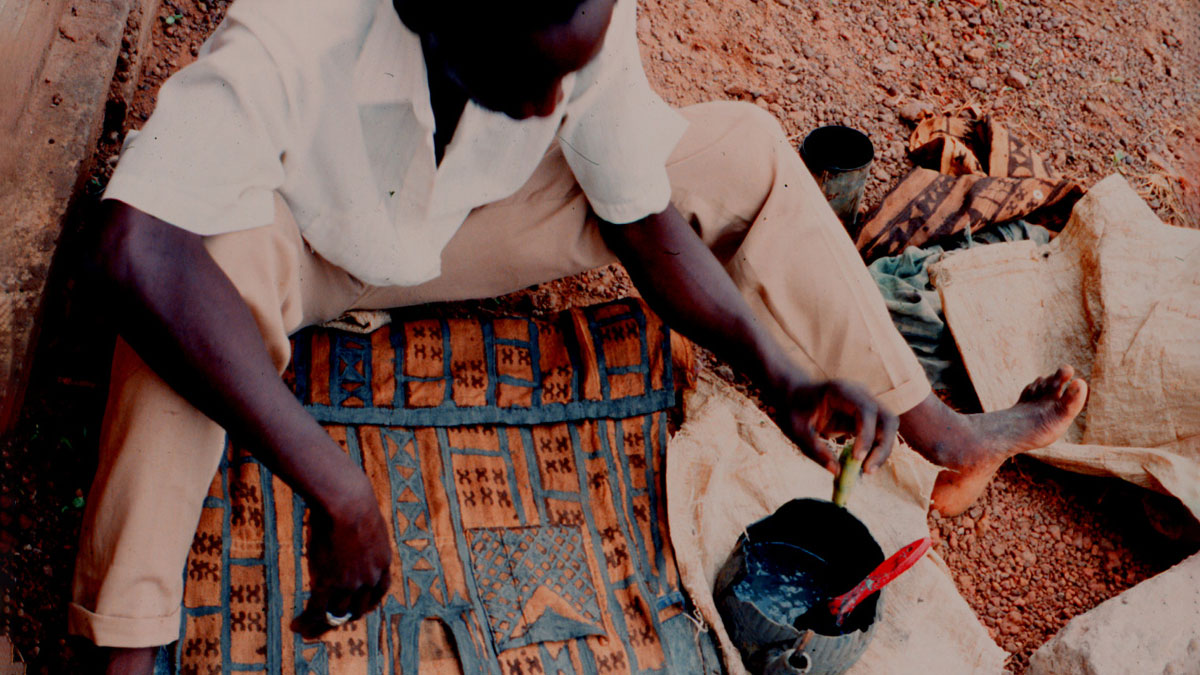
Painting the design on a shirt.
-
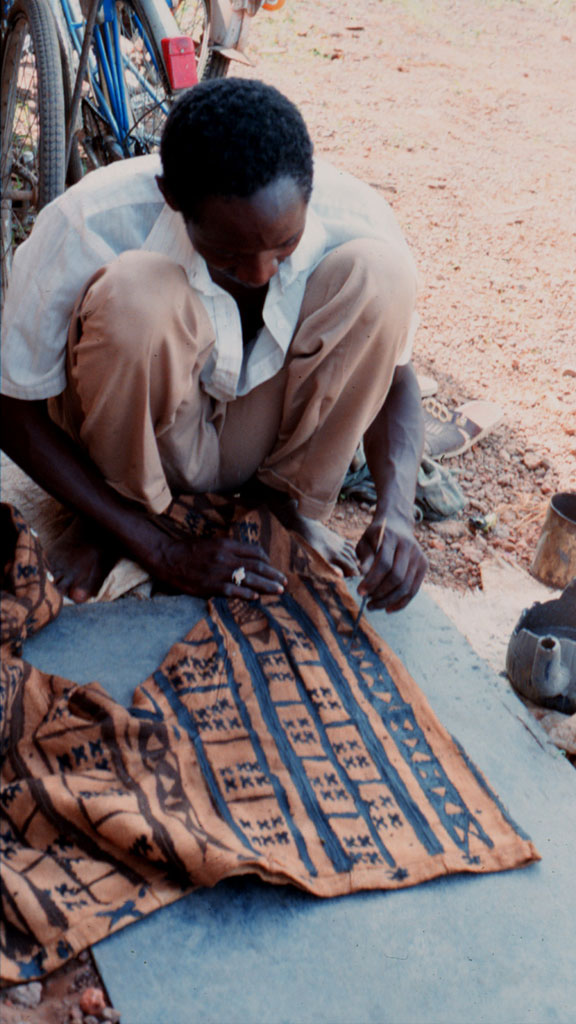 The design is applied to a pair of pants.
The design is applied to a pair of pants. -
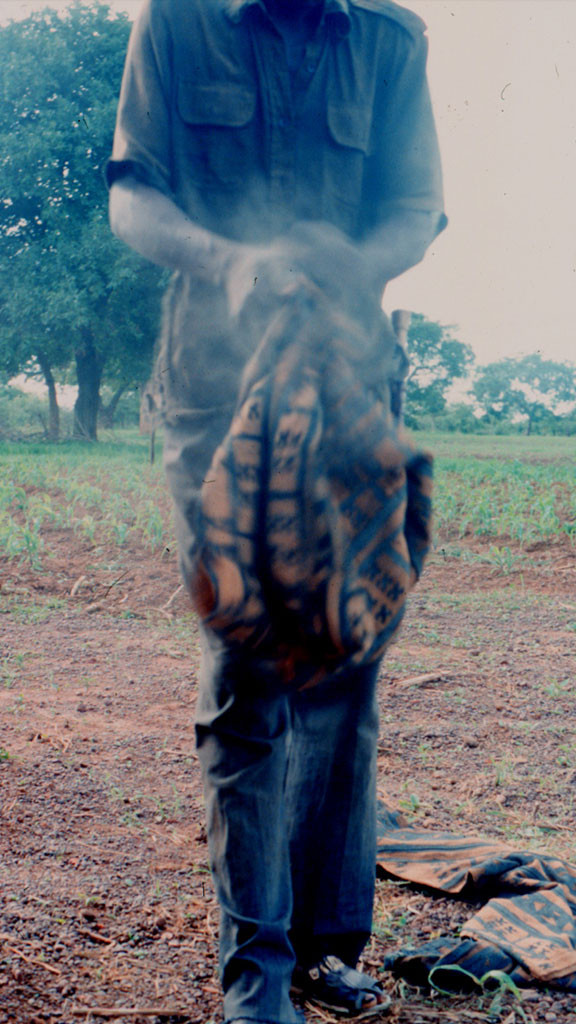 Shaking the cloth helps remove the excess dried mud.
Shaking the cloth helps remove the excess dried mud. -
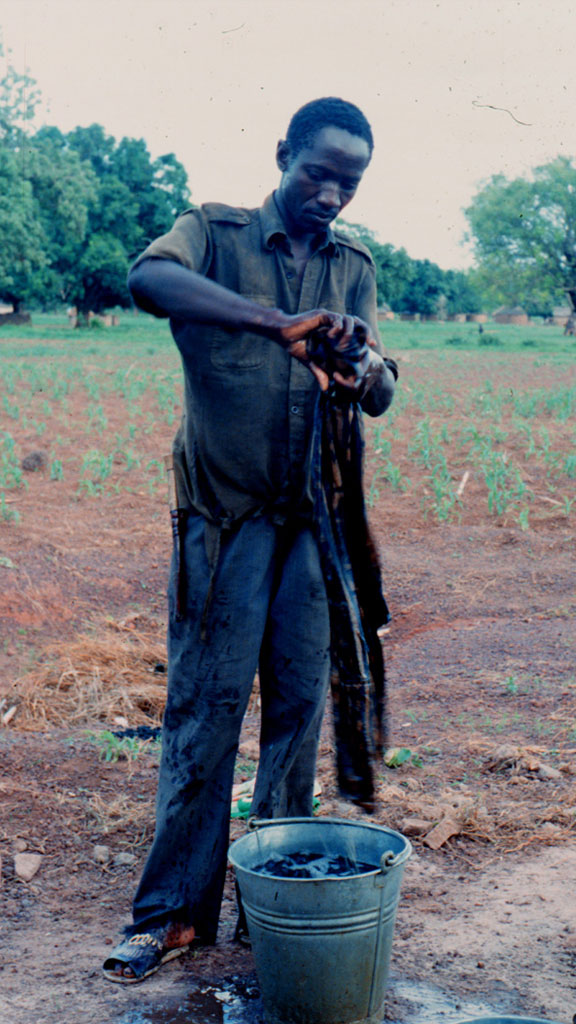 Rinsing the cloth.
Rinsing the cloth.
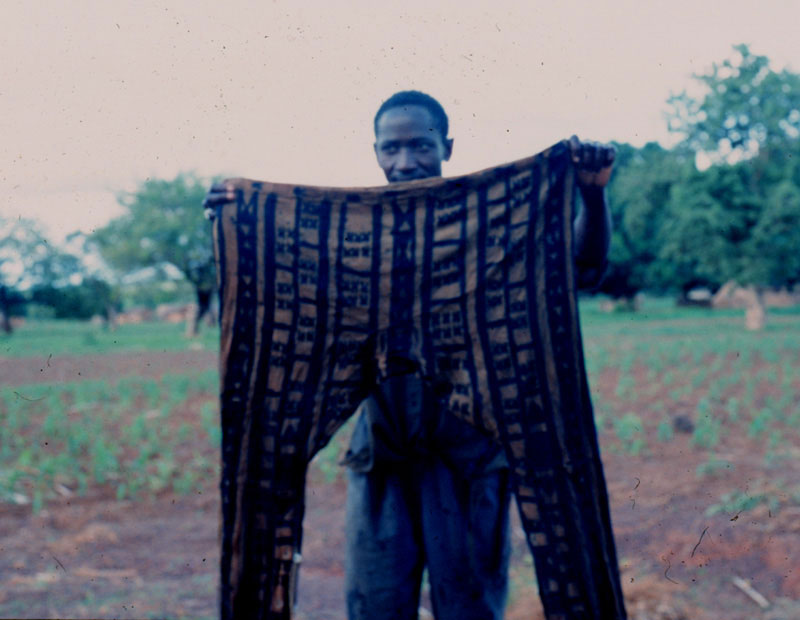
The finished product.